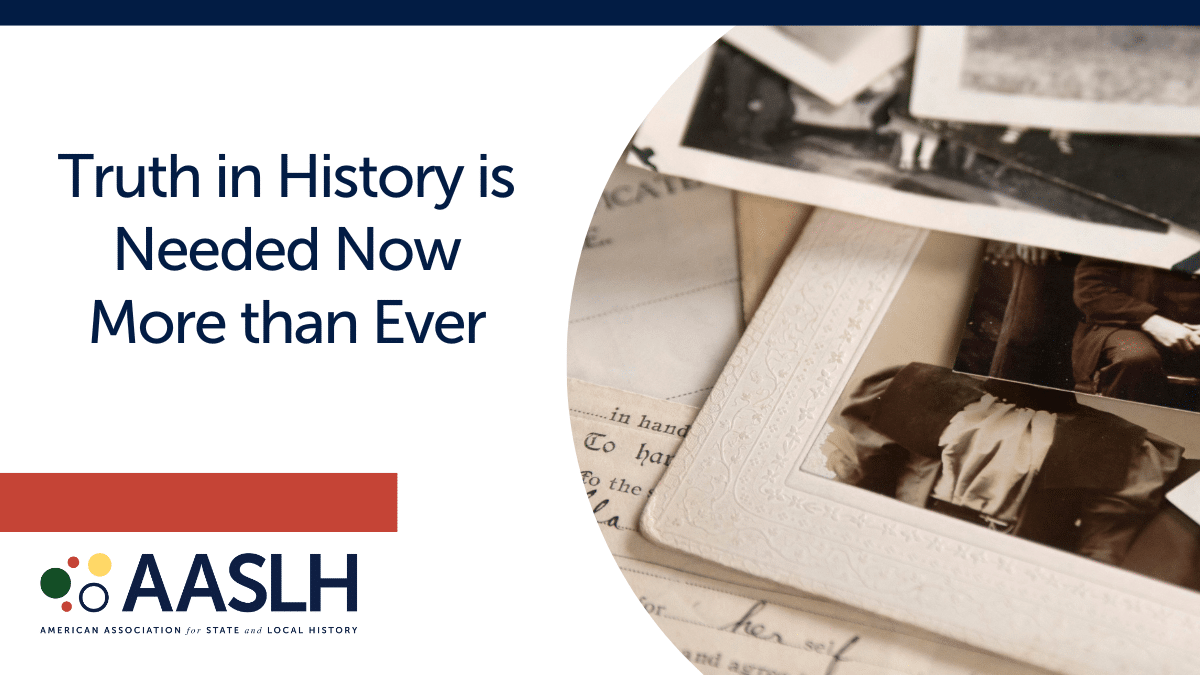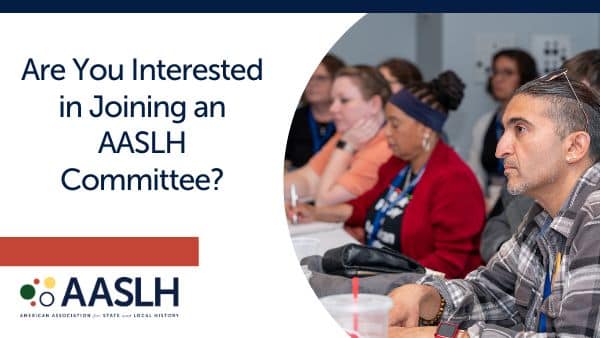
By Michelle Podkowa, DuPage County Historical Museum, Wheaton, IL
This spring, I was asked by AASLH to be on the History in Our Parks Task Force to help work towards better relationships between historic sites, collections, and museums with their parent recreation organizations. This is an important topic for me personally, as my career has been in museums that are run by park districts. My current position is as the Museum Manager at a small county museum that is run by a municipal park district, but owned by the larger county government. My goals for my involvement in this task force include bettering the relationship between my own park district and county governments with our museum, but also and perhaps more importantly to me, helping others learn from our successes and our challenges to create better situations for their historic sites and museums.
It is the History in our Parks Task Force that brought me to AASLH’s 2019 Annual Meeting as a participant in the Friday afternoon roundtable, with financial assistance from the Small Museums scholarship sponsored by the Small Museums Affinity Community. What surprised me the most about the AASLH conference was how useful the Exhibit Hall was for my museum. I have attended AAM’s conference in St. Louis, as well as many state and regional conferences in the Midwest, but at all of them the useful information I took away was always from the sessions. This time, while the sessions were wonderful and engaging, I learned so much directly useful to my position and our museum’s goals from the vendors.

Every vendor I talked with discussed information directly applicable to our museum. I spoke with one vendor about assisting our staff with renovating our permanent exhibit, and this company will be working with our curator to discuss concepts and the processes of this task. After developing the specifications, we will also be asking for a quote and seeing if we can fundraise or earn a grant for the exhibit replacement. Finding a company that fit well with organizations structure and understood our staff’s concerns will greatly help this multi-year process.
I spent about an hour speaking to a representative at the AAM booth where I learned so much about our future accreditation process. Our museum is currently working on StEPs (AASLH’s self-assessment program) and will be doing core document verification and applying for accreditation once that is complete. Learning more about the process and discussing possible assessments to assist in the process helped clarify our museum’s trajectory. We also learned that AAM is willing to assist us in educating our multiple boards and parent organization in this process, including showing them how much work it is. Hearing firsthand from AAM that they are in our corner to support us through the process eased my mind as we begin this daunting task in our small museum.
Assessments were already on our mind as we have been working through StEPs, and stopping by the Conservation Center for Art & Historic Artifacts (CCAHA) and Institute of Museum and Library Services (IMLS) booths allowed me to explore our museum’s specific needs for an assessment (or several). Our museum has done MAP and CAP in the past, but due to our museum’s history, those assessments done fifteen and seven years ago respectively are no longer relevant. At the booths, I learned we are eligible to do each of those assessments again. Before accreditation, our staff will need to complete at least one of these assessments to assist us. The Conservation Center greatly helped by clarifying smaller assessments we could do, even internally, to better understand our collection’s needs.

I often find myself bouncing back and forth between two extremes at conferences. On one hand, I am overwhelmed by the amount of work we have to do to get where we need to be and am unsure how we will ever get there with our small staff and budget. On the other, I am energized by the amount of new ideas or finding out that our museum is right where we need to be, with the plans we have being on trend with the rest of the field. These two extremes often leave me exhausted and sometimes a little jaded. At AASLH this year, while I know the museum has so much work to do, I found myself leaning towards the more energized side, knowing we are entering pivotal years and being so excited I am able to be a part of them.
One final thought: I want to thank everyone who came across my husband and my eighteen-month-old daughter on our trip to the conference. Everyone was so kind to us as we navigated a hotel mostly filled with adults for the conference, and the city of Philadelphia is unbelievably kid-friendly. As a first-time and nursing mom, it is wonderful to be part of a field that embraces inclusivity like this.



